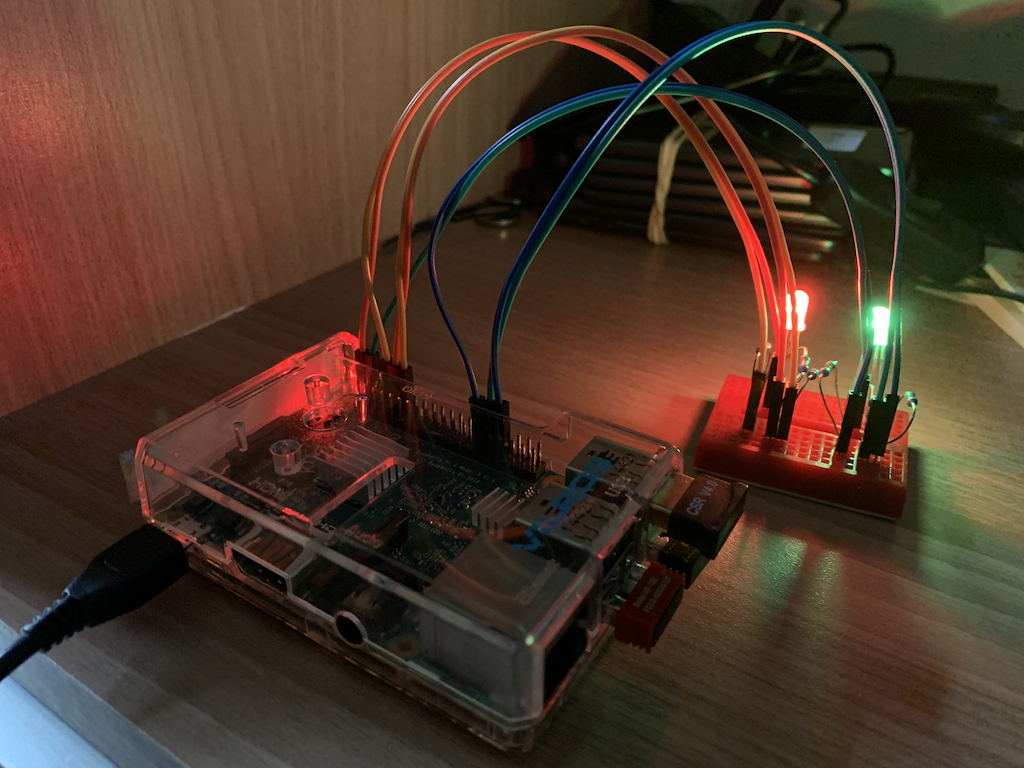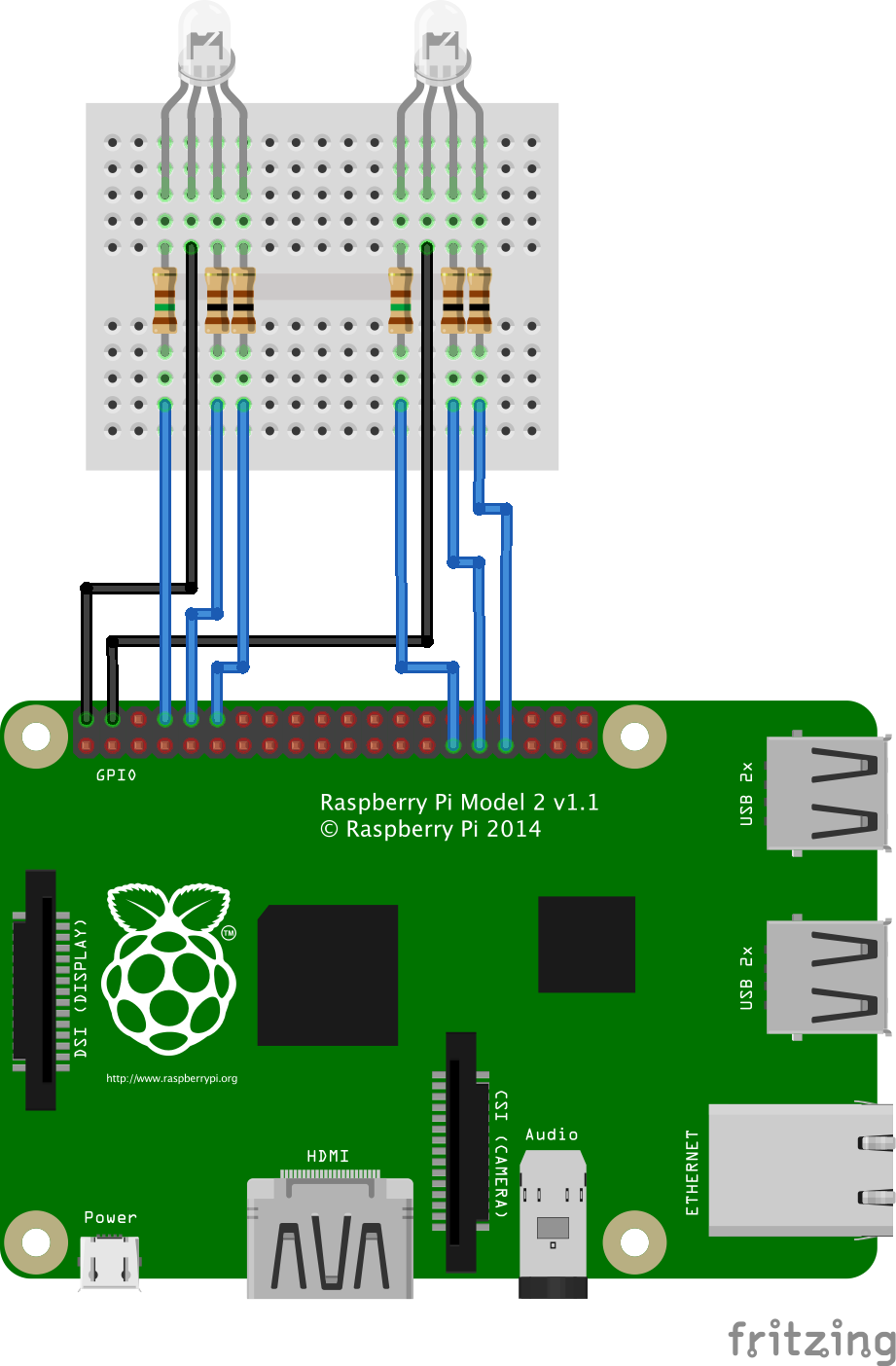Raspberry Pi project that shows the health levels of PM2.5 and PM10 sensor readings from a Luftdaten air quality sensor.
This project was developed to make use of sensors setup as part of the Air Quality Aberdeen project.
When running the LEDs indicate as follows:
- Left - the PM10 level over a range of 0 to 20 with the colour going from green to red.
- Right - the PM2.5 level over a range of 0 to 10 with the colour going from green to red.
If the Raspberry Pi is unable to connect to the Luftdaten API then the right LED will go blue.
When it starts up, just as a diagnostics test, the left LED will cycle from green to red.
Raspberry Pi (has been tested on Raspberry Pi 2B+ and 3B+)
- 2 x RGB LED anode
- 2 x 100 ohm resistors
- 4 x 150 ohm resistors
- Breadboard
- 6 x female - male jumper wires
matplotlib is used to create the colour gradients. If it is not installed then install it using the following:
sudo pip3 install matplotlib
Change the following in the code:
DIRECTtoTrueto get data directly from sensor,Falseto get data from Luftdaten API.SENSOR_IPto the IP address of the sensor - used when getting data directly from the sensor.SENSOR_IDto the Luftdaten ID of the sensor you wish to monitor - used when getting data from Luftdaten API.UPDATE_FREQUENCYto the number of milliseconds between requests to the Luftdaten API.
sudo python3 aqsensor.py
Usage: aqsensor.py [OPTIONS]
Options:
-h --help Show this help text and exit
-v --verbose Show diagnostic information whilst running
-i <IP address>] --ip=<IP address> IP address of the sensor to get data directly from
-s <ID> --id=<ID> the Luftdaten ID of the sensor you wish to monitor
-f <frequency> --frequency=<frequency> update frequency in milliseconds
If ID is specified then IP address is ignored.
If neither IP or ID are specified then the default ID is used.
Or it can be run in the background by setting the permission of the file to allow execution:
chmod +x aqsensor.py
To start it running (and be able to close the terminal and leave it running):
nohup ./aqsensor.py &
To stop it running in the background:
ps ax | grep aqsensor.py
kill PID

